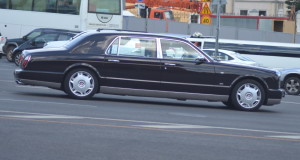Most historians believe Rome was founded in 625 BC and was the then center of a monarchy that covered most of modern day Italy. After a succession of 7 kings, the people revolted and Rome then became the center of a republic ruled by a consul. The consul was appointed by a senate that represented the people. These are some of the reasons that make Rome to be a unique and historic city not only in Italy, but the world at large.
The republic grew to become an empire which at its greatest extent covered the whole of Europe, part of North Africa and the Middle East which included a large part modern day Iraq, Rome marks the beginning of western civilization and the city’s monuments do reflect this awesome legacy.
The Colosseum
This monument enabled many Roman emperors to maintain their popularity among the citizens of Rome, the capital. Originally known as the Flavian Amphitheater, the 4 storey structure with 80 entrances could hold up to 55,000 people who had come to watch the famous games. The games would start with comedy, followed by a show of exotic animals and ended with the famous gladiator battles where men fought to the death. The Colosseum is now in ruins, mainly due to an earthquake that occurred in 847AD. However, it is a worthy testament to the once glorious Roman Empire.
The Pantheon
The monument was originally a temple to numerous Roman gods. It was built on the foundation of two temples dedicated to the gods Venus and Mars. The monument has thick walls of fired clay bricks and marble stone columns and construction began in the reign of Emperor Hadrian in 118AD. It is amazing that the monument has stood intact for over 1300 years.
The monument is mainly cylindrical in shape with the more visible front being a rectangular structure with 3 rows of marble columns. The most impressive feature is the perfect 40meter high dome which bears an opening at the top. The opening is the only source of light and is better known as the Occulus.
St. Peter Basilica
This world’s largest church is a testament to the time when Rome was also the center of the christian faith. The church was built on the location of the Apostle Peter’s crucifixion. St. Peter is considered to be the vicar of Christ, the 1st pope of the christian faith. This makes the St.Peter Basilica a physical reminder of the status of apostle Peter as ‘ROCK’ on which the christian faith is founded. The church’s construction began in 319AD and ended in 349AD. The church’s original design was altered starting in 1506AD under Pope Julius II. Michelangelo is the better known of the architects involved in the transformation of the church to its current form.
Other Monuments and Sites
Rome has many monuments and sites that equally reflect the significance of this great city. These monuments include the Vatican City, seat of the Roman Catholic Pope, the Forum Romanum, the Trevi Fountain; testament to Roman aquaduct construction, the Baths of Caracalla and a host of other sites. Rome is a city one has to see to believe. Nonetheless, it is important to get the right travel information before you can embark on a tour of this amazing city.
To learn more about your trip to Rome visit Travel in Depth http://www.travelindepth.com/tag/142/Rome
 Living There
Living There

